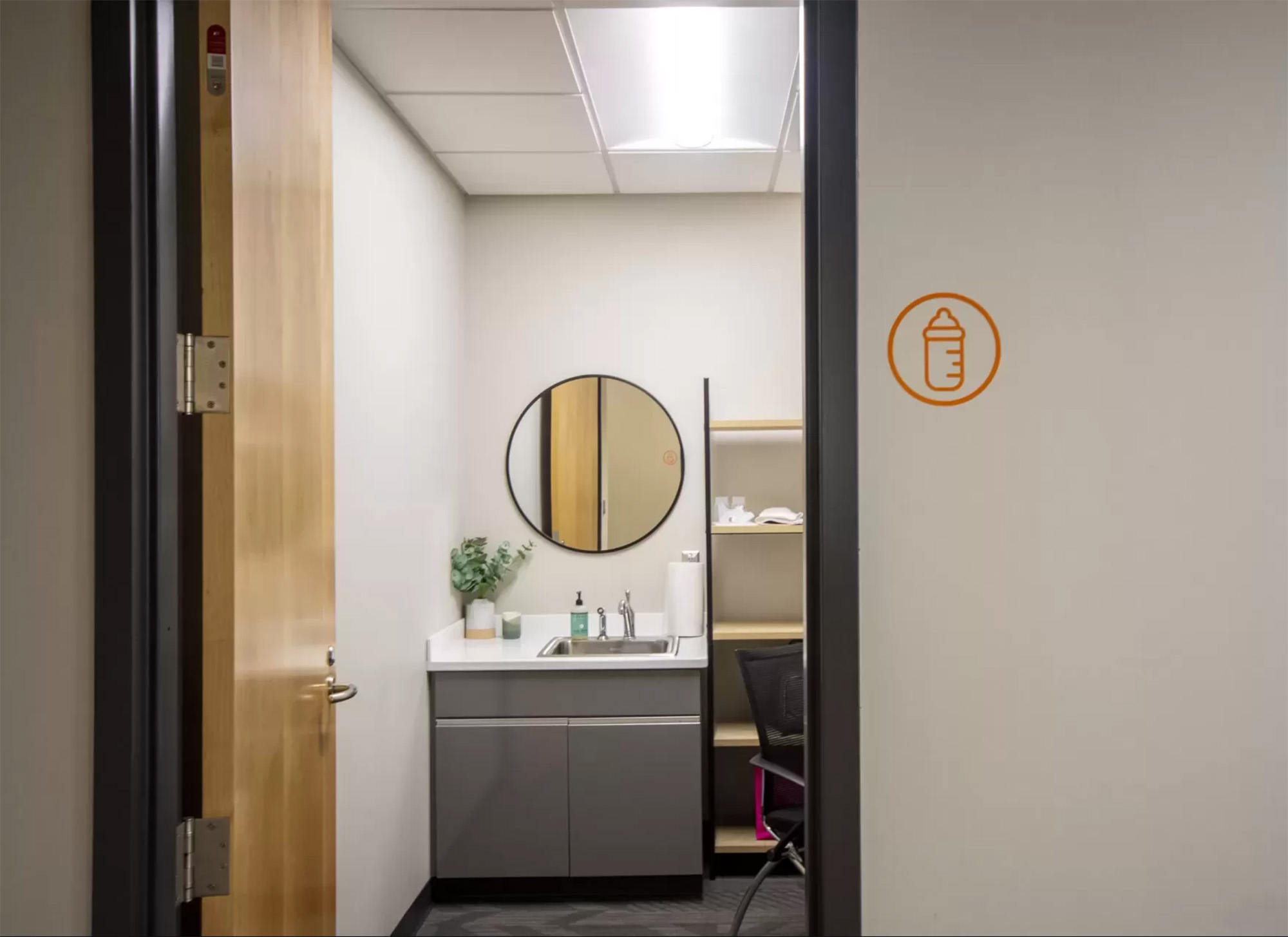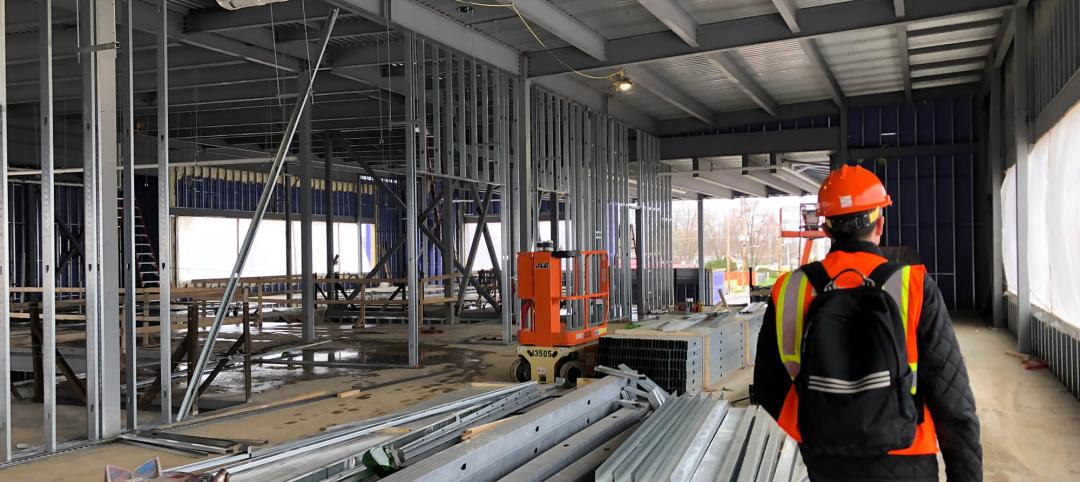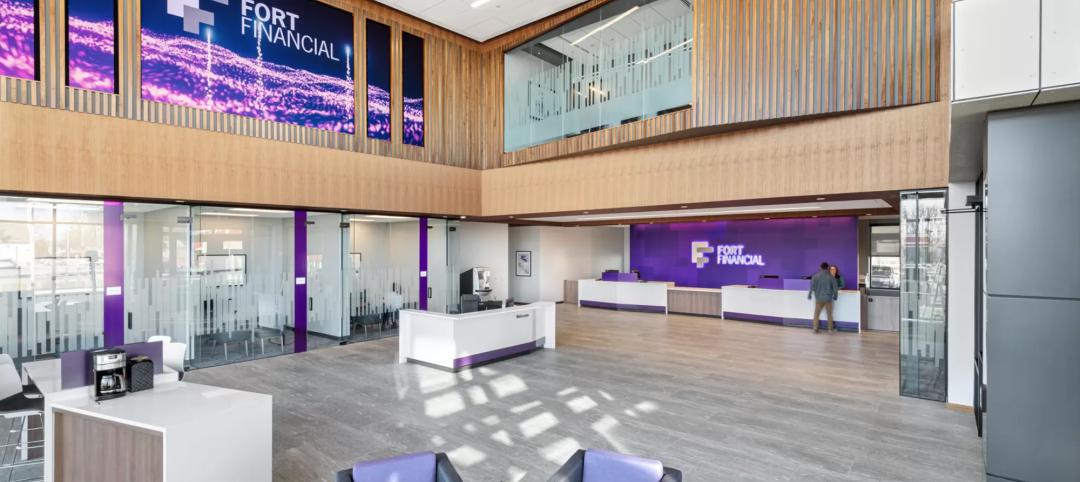Workplace design consists of a variety of amenities as employers strive to attract and retain their employees. In this list is a mother’s room (or a nursing room, or a lactation room), which is a place where employees currently breastfeeding can go to comfortably, conveniently, and privately express breastmilk during the course of a day at work. Since becoming an architect, I’ve drawn a mother’s room into numerous projects. But until I became a mom, I never fully appreciated how important a mother’s room is in a workspace.
Women with children are a quickly growing percentage of the workforce today.
Mother's room in the making
As of 2022, approximately 80% of new mothers start nursing their infants at birth, approximately 55% of mothers breastfeed for at least six months, and approximately six out of every 10 moms are in the workforce.
Starting in 2010, the Fair Labor Standards Act (FLSA) requires employers to “provide reasonable break time for an employee to express breast milk for their nursing child for one year after the child’s birth each time such employee has need to express the milk. Employees are entitled to a place to pump at work, other than a bathroom, that is shielded from view and free from intrusion from coworkers and the public.”

More than the stats and the laws… ultimately, it’s the heart behind a workplace that provides a mother’s room to give her support and the space for her to help provide for her family, without sacrificing her dignity or her ability to be successful at her job.
Ideally, this is a dedicated space that goes beyond the FLSA law and really considers the needs of the users of this space. A pumping mom needs both visible and audible privacy, so it’s helpful to position this room both in a location that’s accessible and out of the highest traffic areas.
Ultimately, a mother’s room is most successful when it’s supported by internal workplace policies and practices.
It’s helpful to have the ability to schedule timeslots for a mother’s room (similar to using technology to schedule a conference room), especially when there are multiple breastfeeding moms in a given workplace. Since a single pumping mom will need to utilize this room 2-3 times a day for 15-30 minutes at a time, larger workplaces should consider offering more than one mother’s room, or even larger mother’s suites with individual seating spaces. Offices need to prioritize the room for pumping moms, but they could also utilize this room for other wellness purposes when it’s not in use (for example—for pregnant moms fighting nausea, for someone fighting a migraine and needing a dark room, for changing clothes, or even just someone needing a quiet moment).

Features of a mother’s room
While there are a variety of ways an employer can provide a comfortable environment for nursing moms, here is a list of things that are helpful to include in mother’s room:
- A comfortable chair
- Convenience outlets—at least one located near the chair for pumps that need to be plugged in during use, and one located near a storage shelf for pumps that need to charge
- A mini fridge—to keep breastmilk out of the communal fridge
- A sink with a drain cover—for washing pump parts
- A shelf and/or counter space—for storing supplies and laying out pump parts to dry
- A table and/or a laptop stand—for moms who want to bring their laptop and continue working while pumping
- A mirror
- Dimmable light
- A privacy lock on the door with an occupancy indicator
- A clothing hook
I feel very lucky and blessed to be in a work environment that supports and encourages parents and families, including moms who need to pump at work. Our mother’s room allows me to continue to provide nourishment for my baby while continuing to be productive. In my role as an architect, I hope to help provide that support and environment for both our clients and our end-users for our design projects.
More from Author
Design Collaborative | Oct 14, 2024
Higher education design for the first-gen college student
In this Design Collaborative blog, Yogen Solanki, Assoc. AIA, shares how architecture and design can help higher education institutions address some of the challenges faced by first-generation students.
Design Collaborative | Sep 16, 2024
Maximizing office square footage through ‘agile planning’
Lauren Elliott, RID, NCIDQ, Director of Interior Design, Design Collaborative, shares tips for a designing with a popular and flexible workspace model: Agile planning.
Design Collaborative | Aug 5, 2024
Mastering the art of project schedule: Expert insights on design and construction
We sat down with two experts in the design field, Ron Dick (Founding Partner and Architect) and Mike Niezer (COO and Architect), to talk about everything you need to know about the entire process.
Design Collaborative | Jul 1, 2024
Mastering office layouts: 5 primary models for maximum efficiency and productivity
When laying out an office, there are many factors to consider. It’s important to maximize the space, but it’s equally important to make sure the design allows employees to work efficiently.
Design Collaborative | Jun 3, 2024
Escalation: Predicting project costs in a volatile market
Thad Berkes, Chief Cost Estimator, Design Collaborative, shares that one of the major hurdles that Design Collaborative attempts to forecast for its commercial construction projects is escalation.
Design Collaborative | Mar 4, 2024
Illuminating your path to energy efficiency
Design Collaborative's Kelsey Rowe, PE, CLD, shares some tools, resources, and next steps to guide you through the process of lighting design.
Design Collaborative | Feb 1, 2024
Prioritizing water quality with the WELL Building Standard
In this edition of Building WELLness, DC WELL Accredited Professionals Hannah Arthur and Alex Kircher highlight an important item of the WELL Building Standard: water.
Design Collaborative | Jan 19, 2024
How to strengthen office design as employees return to work
Adam James, AIA, Senior Architect, Design Collaborative, shares office design tips for the increasingly dynamic workplace.
Design Collaborative | Dec 12, 2023
Transforming workplaces for employee mental health
Lauren Elliott, Director of Interior Design, Design Collaborative, shares practical tips and strategies for workplace renovation that prioritizes employee mental health.
Design Collaborative | Nov 2, 2023
3 fundamental steps to crafting the ideal branch
Jared Monce, AIA, Architect, Design Collaborative, shares three guidelines when designing branches for financial institutions.
















